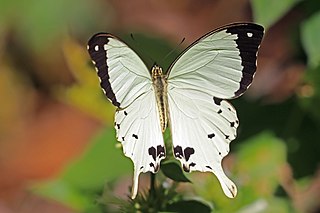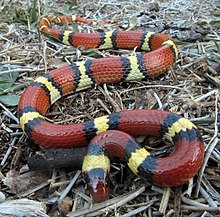An allele is a variation of the same sequence of nucleotides at the same place on a long DNA molecule, as described in leading textbooks on genetics and evolution. The word is a short form of "allelomorph".

In biology, polymorphism is the occurrence of two or more clearly different morphs or forms, also referred to as alternative phenotypes, in the population of a species. To be classified as such, morphs must occupy the same habitat at the same time and belong to a panmictic population.
Disassortative mating is a mating pattern in which individuals with dissimilar phenotypes mate with one another more frequently than would be expected under random mating. Disassortative mating reduces the mean genetic similarities within the population and produces a greater number of heterozygotes. The pattern is character specific, but does not affect allele frequencies. This nonrandom mating pattern will result in deviation from the Hardy-Weinberg principle.

This is a list of topics in evolutionary biology.
Balancing selection refers to a number of selective processes by which multiple alleles are actively maintained in the gene pool of a population at frequencies larger than expected from genetic drift alone. Balancing selection is rare compared to purifying selection. It can occur by various mechanisms, in particular, when the heterozygotes for the alleles under consideration have a higher fitness than the homozygote. In this way genetic polymorphism is conserved.
A heterozygote advantage describes the case in which the heterozygous genotype has a higher relative fitness than either the homozygous dominant or homozygous recessive genotype. Loci exhibiting heterozygote advantage are a small minority of loci. The specific case of heterozygote advantage due to a single locus is known as overdominance. Overdominance is a rare condition in genetics where the phenotype of the heterozygote lies outside of the phenotypical range of both homozygote parents, and heterozygous individuals have a higher fitness than homozygous individuals.

Disruptive selection, also called diversifying selection, describes changes in population genetics in which extreme values for a trait are favored over intermediate values. In this case, the variance of the trait increases and the population is divided into two distinct groups. In this more individuals acquire peripheral character value at both ends of the distribution curve.

The viceroy is a North American butterfly. It was long thought to be a Batesian mimic of the monarch butterfly, but since the viceroy is also distasteful to predators, it is now considered a Müllerian mimic instead.
Apostatic selection is a form of negative frequency-dependent selection. It describes the survival of individual prey animals that are different from their species in a way that makes it more likely for them to be ignored by their predators. It operates on polymorphic species, species which have different forms. In apostatic selection, the common forms of a species are preyed on more than the rarer forms, giving the rare forms a selective advantage in the population. It has also been discussed that apostatic selection acts to stabilize prey polymorphisms.

Müllerian mimicry is a natural phenomenon in which two or more well-defended species, often foul-tasting and sharing common predators, have come to mimic each other's honest warning signals, to their mutual benefit. The benefit to Müllerian mimics is that predators only need one unpleasant encounter with one member of a set of Müllerian mimics, and thereafter avoid all similar coloration, whether or not it belongs to the same species as the initial encounter. It is named after the German naturalist Fritz Müller, who first proposed the concept in 1878, supporting his theory with the first mathematical model of frequency-dependent selection, one of the first such models anywhere in biology.

The common side-blotched lizard is a species of side-blotched lizard in the family Phrynosomatidae. The species is native to dry regions of the western United States and northern Mexico. It is notable for having a unique form of polymorphism wherein each of the three different male morphs utilizes a different strategy in acquiring mates. The three morphs compete against each other following a pattern of rock paper scissors, where one morph has advantages over another but is outcompeted by the third.

A polyphenic trait is a trait for which multiple, discrete phenotypes can arise from a single genotype as a result of differing environmental conditions. It is therefore a special case of phenotypic plasticity.
Prey switching is frequency-dependent predation, where the predator preferentially consumes the most common type of prey. The phenomenon has also been described as apostatic selection, however the two terms are generally used to describe different parts of the same phenomenon. Apostatic selection has been used by authors looking at the differences between different genetic morphs. In comparison, prey switching has been used when describing the choice between different species.

Papilio dardanus, the African swallowtail, mocker swallowtail or flying handkerchief, is a species of butterfly in the family Papilionidae. The species is broadly distributed throughout Sub-Saharan Africa. The British entomologist E. B. Poulton described it as "the most interesting butterfly in the world".

Host–parasite coevolution is a special case of coevolution, where a host and a parasite continually adapt to each other. This can create an evolutionary arms race between them. A more benign possibility is of an evolutionary trade-off between transmission and virulence in the parasite, as if it kills its host too quickly, the parasite will not be able to reproduce either. Another theory, the Red Queen hypothesis, proposes that since both host and parasite have to keep on evolving to keep up with each other, and since sexual reproduction continually creates new combinations of genes, parasitism favours sexual reproduction in the host.
Many types of polymorphism can be seen in the insect order Lepidoptera. Polymorphism is the appearance of forms or "morphs" differing in color and number of attributes within a single species. In Lepidoptera, polymorphism can be seen not only between individuals in a population but also between the sexes as sexual dimorphism, between geographically separated populations in geographical polymorphism and also between generations flying at different seasons of the year. It also includes the phenomenon of mimicry when mimetic morphs fly alongside non-mimetic morphs in a population of a particular species. Polymorphism occurs both at a specific level with heritable variation in the overall morphological design of individuals as well as in certain specific morphological or physiological traits within a species.

Frequency-dependent foraging is defined as the tendency of an individual to selectively forage on a certain species or morph based on its relative frequency within a population. Specifically for pollinators, this refers to the tendency to visit a particular floral morph or plant species based on its frequency within the local plant community, even if nectar rewards are equivalent amongst different morphs. Pollinators that forage in a frequency-dependent manner will exhibit flower constancy for a certain morph, but the preferred floral type will be dependent on its frequency. Additionally, frequency-dependent foraging differs from density-dependent foraging as the latter considers the absolute number of certain morphs per unit area as a factor influencing pollinator choice. Although density of a morph will be related to its frequency, common morphs are still preferred when overall plant densities are high.
An alternative mating strategy is a strategy used by male or female animals, often with distinct phenotypes, that differs from the prevailing mating strategy of their sex. Such strategies are diverse and variable both across and within species. Animal sexual behaviour and mate choice directly affect social structure and relationships in many different mating systems, whether monogamous, polygamous, polyandrous, or polygynous. Though males and females in a given population typically employ a predominant reproductive strategy based on the overarching mating system, individuals of the same sex often use different mating strategies. Among some reptiles, frogs and fish, large males defend females, while small males may use sneaking tactics to mate without being noticed.
This glossary of evolutionary biology is a list of definitions of terms and concepts used in the study of evolutionary biology, population biology, speciation, and phylogenetics, as well as sub-disciplines and related fields. For additional terms from related glossaries, see Glossary of genetics, Glossary of ecology, and Glossary of biology.












